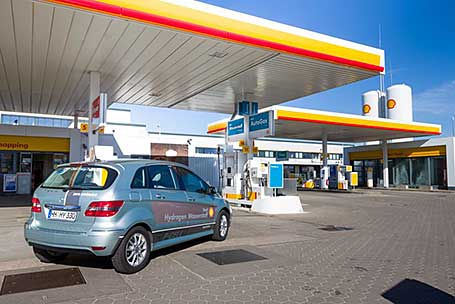
In Hamburg, Germany Shell Deutschland Oil GmbH opened its first CEP approved hydrogen fueling station. The technology for the H2Station was created by H2 Logic.
According to H2 Logic, “The fueling station is the first in Germany to obtain a 2014 approval from the Public-Private Clean Energy Partnership (CEP) after extensive third party acceptance and verification tests. This ensures that vehicle users experiences a fast and reliable fueling of hydrogen with long driving range, similar to that of gaso-line vehicles.
“The new hydrogen refueling station in Hamburg is part of a planned initial network of 50 stations in the country by 2015. This will be a first step in a planned continued roll-out of up to 400 stations onwards 2023, as part of the €350 million H2Mobility Germany initiative.”
The hydrogen station creates H2 onsite through the electrolysis of water. The H2Station also was one of the first to achieve the SAE J2601 standard required by the major automakers and it can achieve pressures up to 10,000 psi so that vehicles can attain maximum range.
H2Station technology is currently servicing the five hydrogen fueling stations in Denmark. By 2016 this number will expand to 11 stations and will ensure that half of the country’s population is within 10 miles of an H2 fueling station.
Here’s a cool video and animation from the Shell Corporation showing the building of a hydrogen fueling station – https://youtu.be/PXt3EcbYEKY
Your reporting is excellent.
Good to see progress.
But it would be nice if Shell told us how much hydrogen could be produced, stored, and dispensed by this station.
And how easily it could be expanded. (it appears to be more or less modular, but space constraints could be a limiting factor.
When we start to see ~500 kg per day stations, then things are getting serious, I’d say. But, of course with the OEMs only producing a few thousand FCEVs per year, small (~100 kg per day) stations are probably still appropriate.